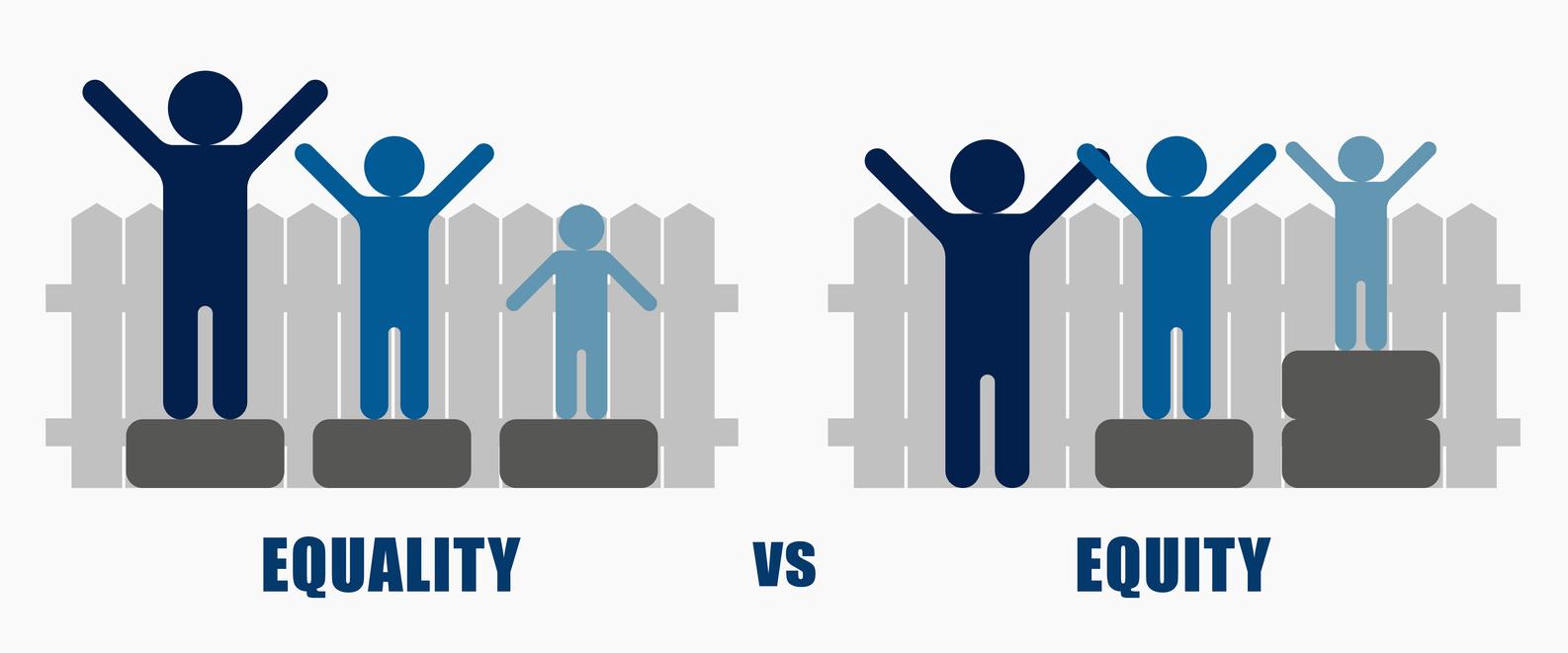Now more than ever, as workplaces become more diverse, it’s imperative for businesses to provide an inclusive and equitable experience for employees, allowing all team members to grow and thrive.
To do that, business leaders need to first understand and recognise what it takes to create an equitable workplace, and the impact it has on employee productivity and engagement – never an easy task.
According Reed and the CIPD's ‘Inclusion at Work 2022’ survey report, 47% of employers don’t have a formal strategy on diversity and Inclusion (D&I), and while many organisations are working towards creating more diverse teams, companies are still struggling with the promotion of equity.
What is workplace equity?
Equity in the workplace refers to an environment where all employees, regardless of their background or identity, have equal access to opportunities, resources, and benefits. It involves treating all employees fairly and without bias, creating a level playing field for everyone to succeed – a notion that is often confused with equality, yet there is a stark contrast between the two.

In its simplest form, equality means each individual or group of people is given the same resources or opportunities. Equity, on the other hand, recognises that each person has different circumstances and allocates the exact resources and opportunities needed to reach an equal outcome.
For example, a line of people of different heights are watching an event from behind a fence. Equality is giving each person a box to stand on to get a better view. Equity is giving each person resources that meet their needs to achieve the same view.
In the workplace, equity encompasses a wide range of factors, such as equal pay for equal work, fair hiring and promotion practices, accessible and inclusive workplace policies, and supportive work environments that foster D&I.
Why is equity so important in the workplace?
Equity focuses on openness, equality and belonging, but even the most diverse workplaces can struggle to create a business that is completely free of bias and discrimination. The Inclusion at Work 2022 report also states that just five per cent of senior leaders surveyed said their organisation has not focused on any D&I areas in the past five years, showing its increasing importance to a company’s culture and values.
Equity in the workplace can benefit:
Talent attraction and retention: when organisations promote a culture of equity and inclusion, they attract top talent who are looking for an environment where they can thrive. Current employees are more likely to stay with a company that values their contributions and treats them fairly.
Employee productivity and innovation: when employees feel valued and respected, they are more likely to be motivated and engaged, which leads to increased productivity and innovation. Equally, when they feel part of a team and their voices are heard, they are more likely to share their ideas and contribute to success.
Business reputation: putting in the effort to enhance D&I can positively impact a company’s reputation, helping to attract the best talent and appeal to a wider customer base.
Customer service: customers are diverse, and a diverse workforce can help better understand and meet the customers' needs, bringing to the table new ideas and different approaches.
Review and evaluate current practices
One of the most effective ways to promote equity is to review and evaluate existing practices, which can highlight where change needs to be made. Does your workplace accommodate people of different races, ethnicities, religions, economic backgrounds, genders, and sexual orientations?
As a group, identify areas for improvement, and use data metrics to determine where you currently stand when it comes to D&I. If you don’t have many workforce metrics to review, consider conducting an employee engagement survey on equity to help get things started and create a benchmark to work from.
Drive awareness
An awareness of equity practices is vital to ensure there’s company buy-in, from senior leaders to apprentices and new starters.
Bring the workforce into conversations about equity to ensure the best outcome across the board. Lead by example and show support for any employee ideas and initiatives, as without listening to different opinions, it’s much harder to set goals for the direction you’d like to take and the policies you’d like to develop.
Prioritise equal pay and benefits
Businesses must ensure employees are paid equally for doing the same job, regardless of their gender, race, or other personal characteristics. According to Beqom’s research, almost two-thirds of UK employees would be happy to share pay details publicly if it meant better pay equity. A good start would be to remove any stigma around discussing salary in the workplace.
Encouraging transparent conversations about wages can ensure that everyone is fairly compensated for the work they do, when combined with a willingness of the employer to make changes, where necessary. This may mean steering the organisation into a culture change that ultimately attracts new business and employees, while securing the loyalty of the existing workforce.
Further progress on pay equity can be achieved by conducting regular pay audits and ensuring your benefits packages are equitable and accessible to all employees.
For more information on the importance of ethnicity pay gap data, read our article with Sandra Kerr CBE, Race Director at Business in the Community.
Make better use of the onboarding process
The onboarding process is a key area for equity improvement, and a great way to introduce new hires to the company culture, mission and values. Typically speaking, onboarding will be standardised for all employees, especially in the first few days or weeks of employment. While it’s great to ensure everyone receives the same information, it’s difficult to guarantee this takes into account the specific needs some groups may have.
Consider creating a two-stage onboarding process to maximise the chances of enhancing inclusivity. The first stage can be standardised to ensure all new hires receive the same experience. The second stage, however, can be tailored to the specific employee to make certain their needs are addressed and can take place a few weeks after an employee’s first day.
Another way of making the onboarding process more equitable is by ensuring the organisation’s commitment and goals relating to D&I are included in the policies and practices around harassment and discrimination, as well as policies around parental leave and other benefits that can be tailored to support diverse groups of employees.
Focus on inclusive leadership
In today's competitive labour market, showcasing your organisation’s inclusive and diverse culture, and commitment to the cause, has never been more important. With companies battling in the same talent pools, a welcoming culture will set you in good stead to attract the best professionals.
Companies with proactive, inclusive leaders can inspire better-performing, highly-engaged teams. No matter how great your company’s diversity metrics, if you don’t have an environment that genuinely embraces difference and instils the confidence of fair treatment in its workforce, your D&I initiatives will fail. That’s why inclusive leaders are needed to set the right tone and ensure all employees can thrive.
Looking to learn more about how you can create a more inclusive and diverse workplace? You can watch our webinar ‘Inspiring change: championing inclusive leadership’ on demand now.




